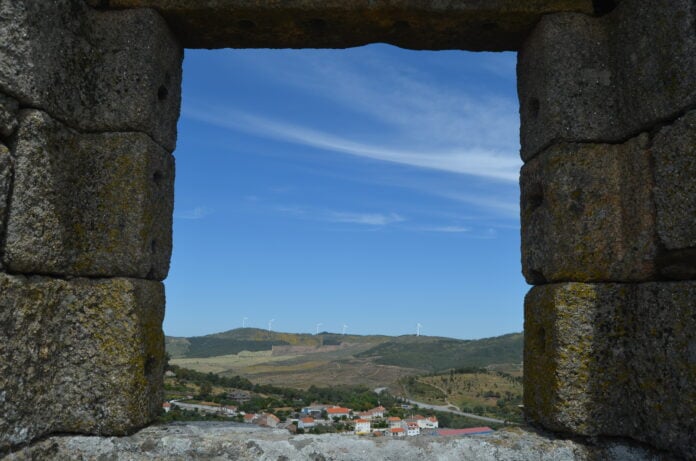Despite being located in the center of the country, the Serra da Malcata Nature Reserve is one of the most remote places in Portugal. It has practically no paved roads and there are no villages within the reserve, although there are several on its edge, such as Vale do Espinho, Malcata, and Meimoa. What’s more, it’s clearly a very little-visited part of the country. It’s possible, in high season, to take a three-hour walk and not pass anyone…
And that’s exactly why I love this region so much. Pristine landscapes, away from the crowds and where the fauna and flora are able to prosper make the Malcata an incredible place to escape to and just disconnect, even during peak seasons. This unspoiled nature reserve offers a unique opportunity to reconnect with the essence of Portugal, allowing visitors to experience a sense of solitude seldom found in more frequented destinations.
The Serra da Malcata Nature Reserve
Created in 1981, the Malcata reserve covers 16,348 hectares and stretches across the municipalities of Sabugal and Penamacor, bordering Spain to the east, namely the Serra da Gata. This reserve was created mainly to protect the Iberian Lynx, which is considered the most endangered feline in the world and the most endangered carnivore in Europe.
The Malcata Nature Reserve is marked by the absence of housing and almost no paved roads, allowing nature to take its course. The mountains are completely covered in forest, particularly riparian woodland and areas of Mediterranean scrub. The most common tree species are the strawberry tree, the black oak, the maritime pine, and the holm oak.
The reserve also has a number of watercourses, the most important of which are the Coa, Bazágueda, and Ribeira da Meimoa. The Coa River rises slightly to the north of the reserve and acts as a border for a few kilometers. The Ribeira da Meimoa rises in the mountains and its reservoir is at the western end of the reserve. Finally, the Bazágueda River, a tributary of the Erges, which in turn flows into the Tagus.
Looking for the Iberian Lynx
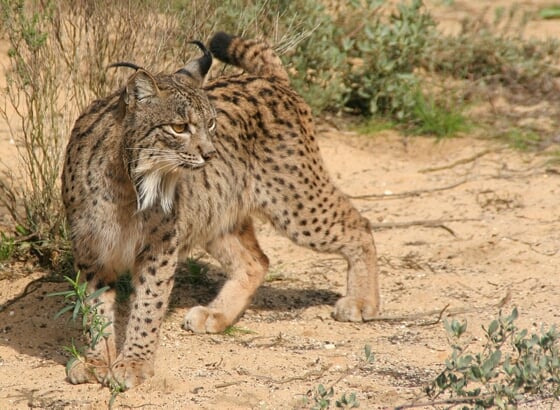
If there’s one thing Malcata is famous for, it’s the lynx – this mythical animal that is also the symbol of the nature reserve. The Malcata lynx is the Portuguese Loch Ness monster but with one big difference: many more people claim to have seen the Scottish monster than the Malcata lynx.
Jokes aside, spotting the lynx in Malcata will be a very complicated or even impossible mission, since there have been no recorded sightings of lynx for decades. In other words, there are many reasons to go to the Serra da Malcata, but don’t count on seeing the lynx there.
About the Iberian Lynx
The Iberian Lynx (Lynx Pardinus) is the only carnivore endemic to the Iberian Peninsula and is a beautiful animal with furry ears, long legs, a short tail, and a mottled brown/yellow color. But the most striking features are its fur collar, which looks more like a beard, and the tuft of black hair on top of its triangular ears.
With a length of between 85 and 110 centimeters, a height of up to 60 centimeters, and a weight of up to 27 kg, the Iberian lynx is a relatively small animal, much smaller than the Eurasian lynx. In short, it looks like a “small elf leopard”.
The Iberian lynx likes quiet places with little human presence and dense undergrowth where it can hunt wild rabbits and hares. For this reason, Malcata would be an excellent place for them to be.
The Fauna of Serra da Malcata
The lynx was the main reason for the creation of the reserve, but it covers much more than just the Iberian lynx. While it’s practically impossible to see the lynx, it is quite possible to see some of the other animals that make up the diverse fauna of this Nature Reserve, such as the black vulture, the black stork, otters, and even wild boars. There are other animals that are rarer or more difficult to see, but which are also present in Malcata, such as the wildcat, the red fox, the gineta, and the red squirrel.
During your visit, you’ll have the opportunity to see a red fox crossing the road, which might come as a great surprise given how elusive they usually are. You’ll also be able to see griffin, the huge, vulture-like birds in flight. Anyway, for those who enjoy the adventure of seeing animals in the wild, the Malcata reserve is one of the best places to visit in Portugal.
How to visit the Serra da Malcata
Although the reserve is by no means a very touristy place – it was only visited by 2,253 people in 2017 – there are several ways to explore it, to get to know its various facets.
Going to the Malcata Reserve by Car
There are very few paved roads within the reserve, in fact, I only know of two. One runs from the village of Malcata through the reserve for a few kilometers and leaves at a bridge over the River Roa near Quadrazais. On Google Maps it’s called Rua Carvalheira de Jorge. Honestly, this is perhaps the least interesting part of the reserve, but if you want to go through the reserve, it’s a possibility.
The other road is the one that enters from the south, a few kilometers after Meimoa. This road is sometimes marked as the N332, and goes well into the reserve, with some very beautiful places.
The problem is that it eventually stops being asphalted and turns to dirt. The surface isn’t bad, but some might decide not to risk it and don’t continue along it. However, you’ll often see cars that pass easily. So, if you decide to risk it, you probably won’t have any problems, and if you have a 4×4 or SUV then it’s really peaceful.
All the other roads are dirt roads, and the quality of the surface varies. So I wouldn’t really recommend going in a normal vehicle, although you’ll probably be able to pass on many of them.
Going to the Malcata Reserve on Foot
The best way to get to know Malcata is on foot. You can park at one of the park’s entrances, or when the paved road ends and simply walk. This way you’ll have time to explore its beauty and the likelihood of seeing some of its fauna and flora increases greatly.
There are some marked trails, so you can do them without too much trouble. However, I advise you to take your GPS with you in case you get lost or hit a bad trail.
Things to do in Serra da Malcata
Canoeing, Kayaking, or SUP
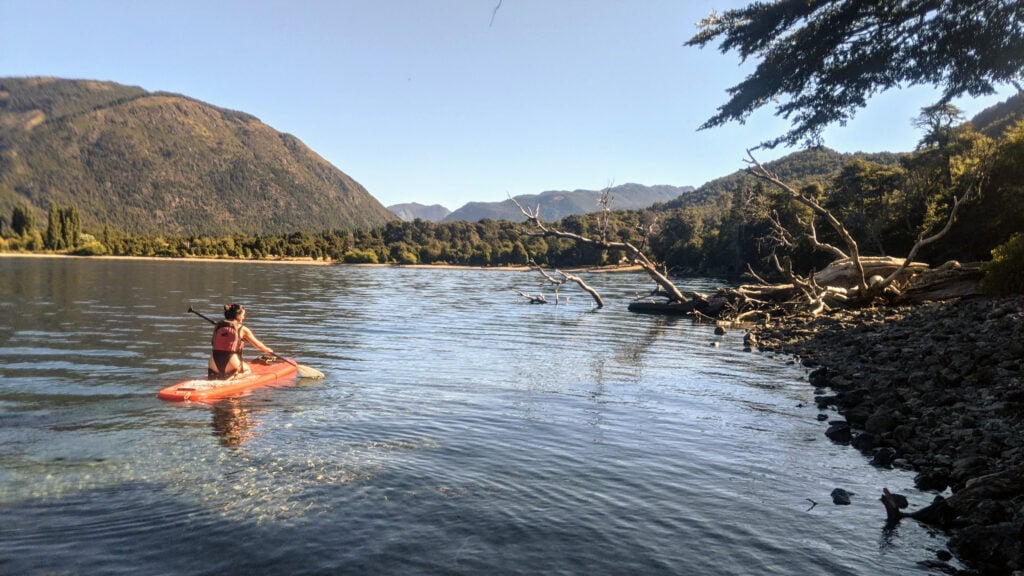
The dam on the Meimoa Stream has created an artificial lake that allows for various water activities. If you like canoeing, kayaking, or SUP (stand-up paddle), this is an extraordinary place due to its natural beauty, climate, and crystal-clear waters. You can climb up the dam and discover the reserve from the water.
Obviously, this activity is much more enjoyable in the summer, when temperatures are extremely high. Even if you don’t have the equipment, you can rent canoes and boards at Meimão Beach, on the right bank of the Meimoa reservoir.
Go to Meimão Beach
Meimão Beach is on the right bank of the Ribeira Meimoa reservoir, relatively close to the dam. This is one of the nicest river beaches in the country. It has a small sandy area and a much larger one with grass, trees, and plenty of shade. You can understand why it’s a very popular beach in the region, but given its size, it’s unlikely to be overcrowded.
Unsurprisingly, on these dam river beaches, this beach has a floating pool (with two different depths) and a diving board. There is also a small bar serving light meals, drinks, and ice creams.
Finally, as mentioned above, you can rent kayaks, paddleboards, or pedalos here to make the most of the dam’s water mirror.
Hiking Trails
Although they are not widely advertised, some signposted walking routes allow you to make the most of the natural beauty of the reserve and explore the forests and woodlands of the mountains. These include:
Espírito Santo Chapel Trail – In the northern part of the reserve by the River Coa, in Quadrazais. An easy circular route of just 4.1km.
Salgueirinho Trail – In the southern part of the reserve, passing by Quinta da Bazaguedinha. An easy circular route of 7.1km.
Sobreiral Trail – Along the Meimoa dam, inside the reserve. Circular route, moderate difficulty (with steep ascents and descents), 8.9km.
Of these, the Sobreiral Trail is particularly interesting as it takes you through areas of deep forest, and when you reach the top of the climb the view is phenomenal. On the other hand, it is also possible to stop along the way and take a refreshing dip on the shore of the reservoir.
Mountain Biking
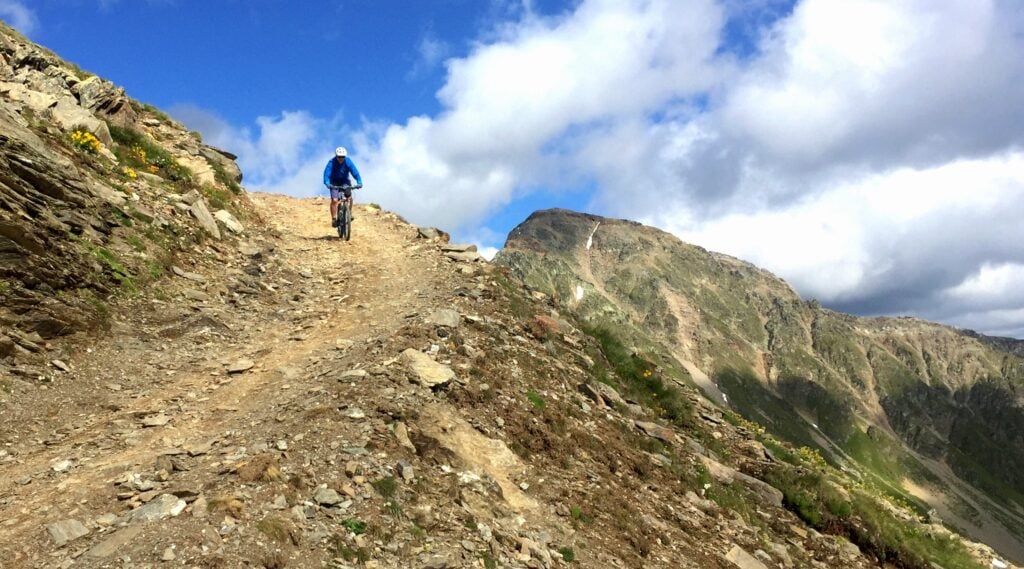
The Serra da Malcata is also a suitable place for mountain biking. In fact, all those dirt roads, some steeper than others, call you to go cycling. It’s possible to do routes of varying levels of difficulty, including some of those indicated above for trails.
If you’re used to long drives, you can take the paved road that starts south of the reserve and leaves at the Meimoa dam. There’s a long climb (always on asphalt), but it’s made up for by the fun descent on dirt to the reservoir, and the relatively flat final part along the shore. If you don’t want to make such a big effort, you could, for example, leave the car by the dam and always take the path that follows the bank of the dam, and only do the flat part of this path.
Going Off-Road in a 4×4
Almost everything you can do by bike, you can also do by 4×4. If you have one of these vehicles, it will certainly be a fun and much less stressful way to get to know the Serra da Malcata Nature Reserve. It’s also a way for less mobile people to get to know this natural wonder of Portugal.
In principle, any tall vehicle will be able to pass on the red roads on the reserve map. Naturally, avoid making unnecessary noise and adopt a defensive driving style. After all, this is a nature reserve, not a rally stage.
Visit the Village of Malcata
The village of Malcata, after which the mountains and the reserve are named, is on the outskirts of the reserve, but it’s well worth a visit. It’s a traditional village, with some typical schist houses and others that are more modern. In terms of heritage, one must mention the parish church, the community oven, the clock tower, and the cheese factory.
Despite having far fewer inhabitants than 60 years ago, this is still a lively village with over 300 inhabitants. It also has a very pleasant river beach on the River Coa, on the reservoir of the Sabugal dam, so it could be a good alternative to the river beach at Meimão.
Debate About the Origin of Penamacor’s Name
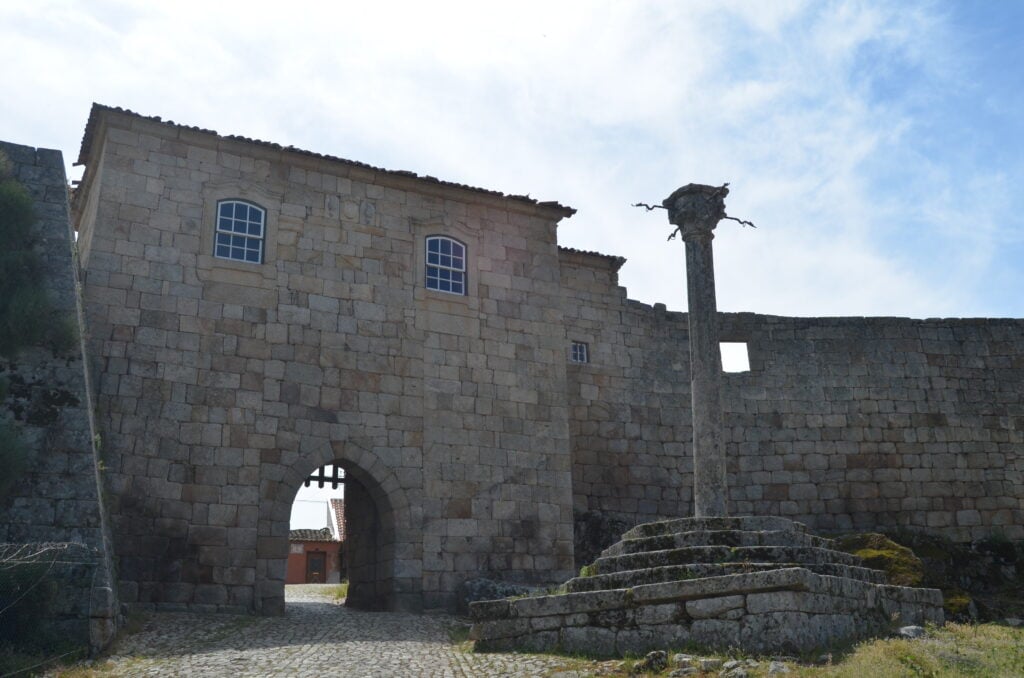
The name of this village, according to one of the legends, is said to have originated from a notorious bandit named Macôr, who is believed to have lived here. It is said that this outlaw resided in a cave called Penha. Over time, the name underwent changes and became known as Pena, thus the town came to be known as Penha de Macôr or Pena Macôr.
According to another version, a fierce battle between the villagers and bandits resulted in so much bloodshed and of such an evil hue that the village became known as Penha de má cor, meaning “Penha of bad color.” Yet another account suggests that there were two settlements in this area, both located on hills, Pena de Garcia and Pena Maior. Due to the alteration of the Castilian pronunciation, Magor became Macor, leading to the formation of Pena Macor. Regardless of the name’s origin, one thing is certain – it represents one of the most picturesque and charming villages in the country.
Where to Stay in the Malcata Reserve?
It is not possible to stay in the reserve, as there are no villages or lodgings within it. However, there are some villages on the outskirts with various lodgings, as well as the towns of Sabugal and Penamacor.
Meimoa
Meimoa turns out to be one of the natural destinations for those who want to visit the Malcata reserve. It’s very close to the southern entrance and is a quiet village with a beautiful river beach.
Meimão
In the Meimão bathing area, there are bungalows that can be rented to stay overnight. These have a kitchenette and two bedrooms, making them suitable for couples, families, and small groups.
It’s a great option for those who want to be as close to the nature reserve as possible, but the mobile network and Internet can be problematic here.
Over and Out
The Serra da Malcata Nature Reserve offers a rare and precious escape into Portugal’s untouched wilderness. Its remoteness and lack of infrastructure contribute to a unique sense of solitude, making it an ideal destination for those seeking respite from the usual tourist hubs.
While the quest for the elusive Iberian Lynx may prove challenging, the reserve unveils a tapestry of wildlife, including black storks, otters, and wild boars, creating a haven for nature enthusiasts. Beyond the rich fauna, the landscape itself is a spectacle, adorned with lush riparian woodlands, Mediterranean scrub, and towering mountains, providing a haven for both casual hikers and passionate nature lovers alike.
For those looking to explore this hidden gem, there are various ways to immerse oneself in the beauty of Serra da Malcata. Whether navigating the few paved roads by car, discovering the marked hiking trails on foot, or embarking on thrilling mountain biking adventures, the reserve caters to a range of interests. Water enthusiasts can also indulge in canoeing, kayaking, or paddleboarding at the Meimoa reservoir, creating a serene contrast to the rugged terrain.
As day turns to night, visitors can explore the vibrant village of Malcata, with its traditional charm and architectural treasures. However, it’s essential to note that accommodations within the reserve itself are scarce. Nevertheless, nearby villages like Meimoa offer cozy lodgings, providing an opportunity to experience the region’s unique blend of natural beauty and rural authenticity.
In essence, the Serra da Malcata Nature Reserve is a testament to the delicate balance between conservation and exploration. Its unspoiled landscapes and diverse ecosystems beckon those who seek a genuine connection with nature, inviting them to witness Portugal’s wild heart and soul. As you plan your visit, embrace the simplicity and authenticity of this remarkable region, allowing its untouched beauty to leave an indelible mark on your journey.

